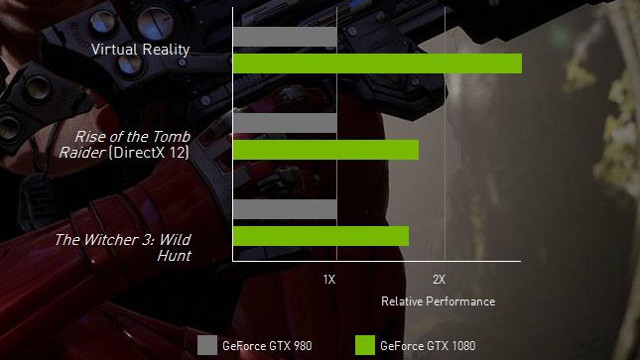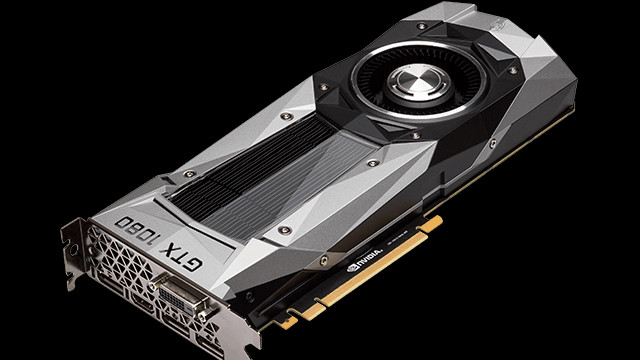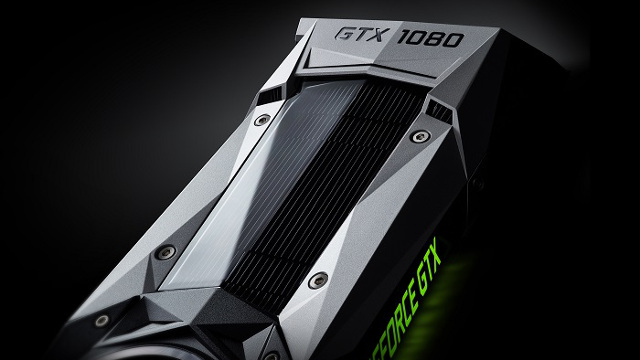After two years of anticipation, the GeForce 10 series has finally arrived. This last week Nvidia CEO Jen-Hsun Huang took Dreamhack's stage to debut the GTX 1080 and GTX 1070. Technology and PC enthusiasts have been talking non-stop since.
There's a lot to be said about Nvidia's Pascal line of cards. We'll go over all the details below.
The GTX 1080 is notably powerful. Previously, the GTX 980Ti was the benchmark for top-tier, attainable performance. The GTX 1080 outperforms that card by around 20% to 30% depending on which benchmark you look at with a whopping 9 teraflops of single precision floating-point processing power. It was recently shown running Doom 4 on Ultra settings at over 150 frames per second, something no other graphics card can achieve. This performance is even better if you're talking about virtual-reality games thanks to new software that Nvidia has created.
The Founder's Edition will launch first and comes with a reference design. The May 27th date that you've been hearing is exclusive to the Founder's Edition. The Founder's Edition uses a reference design, which means that it will expel air through the back I/O shield. Reference designs tend to be preferable for multi-GPU setups since they don't blow hot air out into the case, but they also don't cool as well as non-reference designs. Unless you are antsy to get your hands on a new graphics card, you may want to wait until early May when manufacturers such as Gigabyte, ASUS, and MSI are confirmed to be debuting their non-reference designs.

Pricing is a touchy subject. The GTX 1080 in particular was debuted at $599. However, leaks indicate that you may not be able to find a GTX 1080 at that price point during the next few months. Thanks to the multi-billion cost of developing Pascal and what is sure to be relentless demand, The $699 price point of the Founder's Edition model is likely to spill over to its competing non-reference competitors. Cross your fingers.
Efficiency in virtual reality is a key feature. Nvidia has crafted what is called simultaneous multi-projection, which is a fancy way of saying that Pascal cards will be able to render only what a virtual reality headset sees, rather than rendering a huge, flat image and then morphing it into the frame of the virtual reality screen. This cuts a tremendous volume of wasted pixel processing that has stressed even the most powerful Maxwell graphics cards. Put simply, this single feature is going to have huge benefits in virtual reality space.
Nvidia is making a virtual reality game. It's called VR Funhouse, and it's not too dissimilar from Valve's The Lab where there are a handful of mini-games available for play. These mini-games focus on showcasing technology, especially advanced physics processing. It will be available for free in the near future.
Many consider the GTX 1070 to be the the more impressive option. At nearly half the price, the smaller brother of the two is a very compelling option that most are considering to be much better value, similar to how the GTX 970 was perceived when compared to the GTX 980. It will be capable of processing 6.5 teraflops of single-precision floating point each second, which is much higher than the GTX 970's 4.7 teraflops. Unless AMD releases something truly spectacular with Polaris, it appears that Nvidia is prepared to sell millions of its new product.
8GB VRAM is the new standard. Both the GTX 1080 and GTX 1070 will come equipped with 8GB of video memory. In the case of the GTX 1080, it will have 8GB of GDDR5X, which is said to be even faster than the GDDR5 that graphics cards have been using for many years. This large pool of video memory shows that Nvidia is aware of how memory intensive higher resolutions are, let alone virtual reality. 4K gaming is going to be a thing soon.

Running on a 16nm process. Pascal is a small chip technology that was engineered to be a drop in size when compared to previous generations. At 16nm, it is very power efficient, and thus will generate less heat than Maxwell. As a result of this efficiency, both the GTX 1080 (180W) and GTX 1070 (150W) will only require a single 8-pin for power.
A solution for multi-monitor gamers. Nvidia has developed simultaneous multi-projection, which will allow consumers who use multiple monitors to see visuals without distortion/morphing. This will utilize multiple viewports to correctly display at the angle at which your side monitor(s) are angled. It was best described as "looking through a window".
Screenshots are getting some love. Ansel is a new piece of game capture software that will allow you to take highly customized screenshots. You will be able to move your perspective around game worlds, increase the resolution to absurd levels of clarity, and even snap virtual reality images to share with anyone who has a virtual reality headset on desktop or mobile.
The ports. VGA is dead. The reference cards will have 3x display port 1.4, 1x HDMI 2.0b, and 1x DVI. If you plan to purchase one a Pascal card soon, you may want to make sure that your cabling is ready.
AMD is ready to compete. Many PC enthusiasts have been anticipating AMD's widely hyped Polaris launch. This new generation of cards is expected to be very powerful and compelling. Not much has leaked about the cards, so there's no telling how they will fare against Nvidia's line. That said, they are said to launch at the end of May, so we won't be waiting long to find out.







